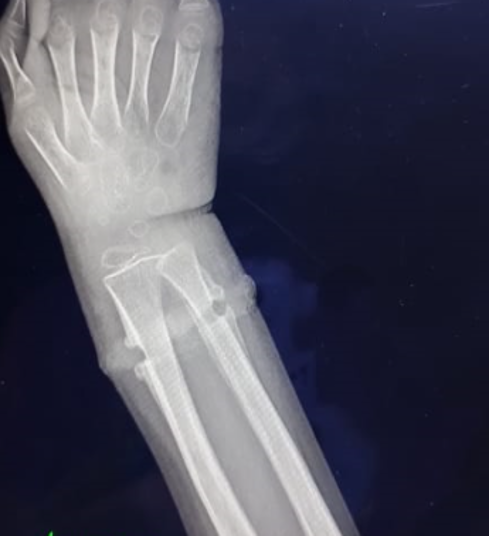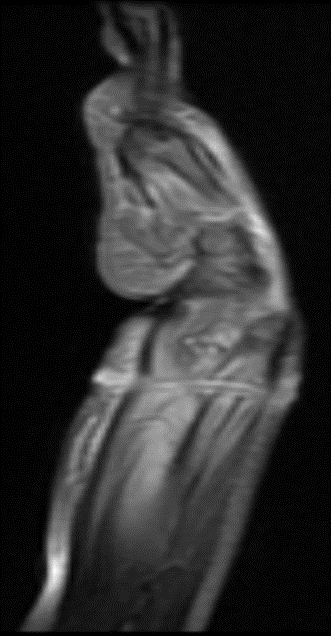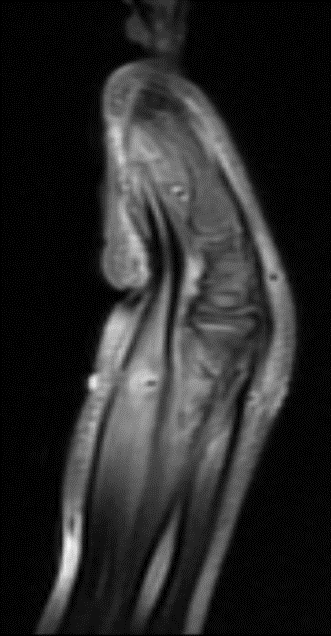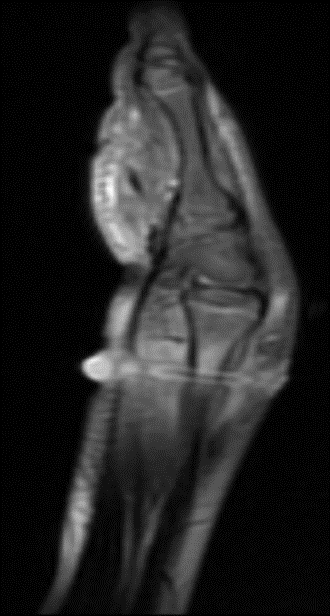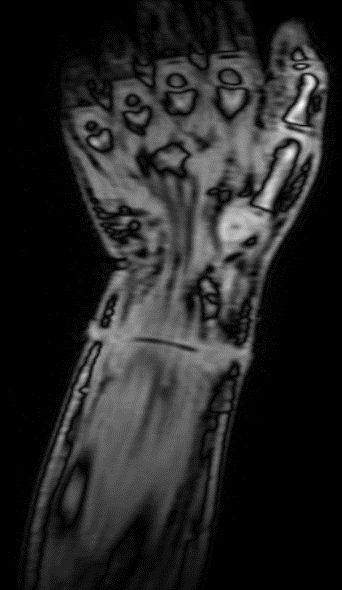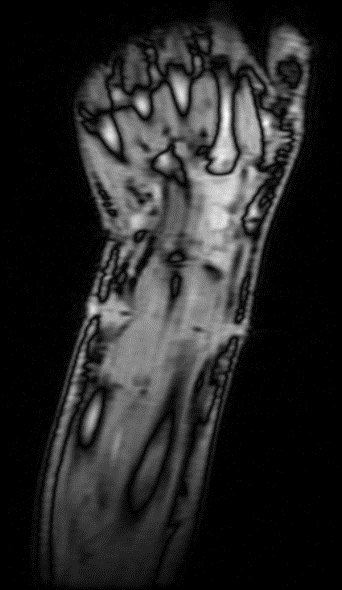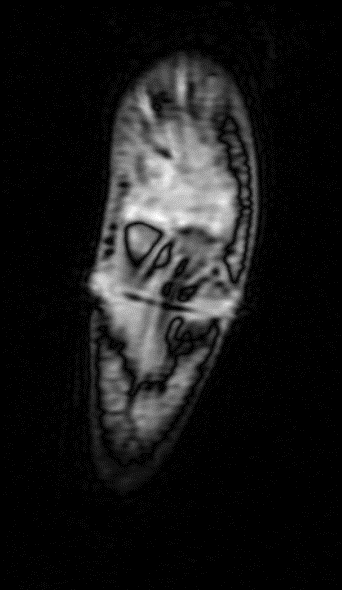A 6yrs old child H/O tying of religious thread followed by rakhi over it 3months back.
A :
Plain radiographs shows a circumferential constriction in the soft tissue shadow underlying bones periosteal reaction, producing a ‘constriction sign’ on plain radiographs.
B and C :
Sagital and coronal MRI images showing a circumferential fluid containing tunnel along the distal forearm above the joint line with linear hypointense thread like structure within. Diffuse oedema is seen along the dorsum of the hand. Bulky and edematous muscles of the flexor compartment in the distal third of the forearm with myofascial oedema and fat stranding.This tunnel extends from the cutaneous plane deep into the subcutaneous , muscular and deep to the muscular plane contacting the medial ulnar cortex and lateral radial cortex.
D :
Sequential images (Proximal to distal ) Median nerve is visualized in proximal and distal aspect with non visualization at the level of circumferential tunnel suggestive of complete disruption with oedema and thickening noted proximal and distal to this site.
DHAGA/RUBBER BAND SYNDROME
Discussion:
- In the Indian sub-continent, it is customary to tie a sacred thread (the Moli Dhaga in the Hindi language) on the wrist before any religious ceremony is begun. Self-removal of this sacred thread is considered an ominous sign, and so the thread may remain in situ for prolonged periods. In children, parents may forget to remove it.
- Cases occur in an age group where growth is rapid. The red and yellow thread may lie hidden in the wrist crease, especially in infants and children with chubby hands. Due to the rapid growth and increase in the circumference of wrist, the thread cuts through the soft tissue around the wrist.
- This gradual penetration is surprisingly painless and without neurovascular symptoms. As the skin epithelises over the thread, it can become completely invisible.
- This process of slow tissue penetration and rapid healing allows the thread to penetrate tendons and come to lie deep to them as was observed in our case.
- The clues to this type of embedded foreign body are a thin linear scar, usually encircling the wrist, a non-healing discharging sinus or sinuses and, in long-standing cases, the radiological ‘constriction sign’.
- The unsuspecting clinician may make a diagnosis of a tuberculous lesion, which is common in India where the disease is endemic.
- Plain radiographs show a circumferential constriction in the soft tissue shadow with normal underlying bones. In long-standing cases the thread may reach the bone producing a ‘constriction sign’ on plain radiographs.
- MRI show altered soft tissue signal intensity, swelling and discharging sinus surrounding wrist joint with a circumferential hypo-intense band[1]like structure embedded in soft tissue, superficial to tendons causing constriction with normal underlying bones.
- It can also cause acute compartment syndrome with neurovascular compromise leading to limb-threatening condition with tissue necrosis, irreversible nerve and muscle injury, and permanent functional impairment, if left untreated.
- Although, surgical removal of the buried thread or rubber band is successful in most cases with good outcome of hand function, the clinician should be cautious of residual neurological changes .
Imaging differentials:
- Chronic infection
- Osteomyelitis
- Osteoarticular tuberculosis
- Mycetoma.
A high index of suspicion is needed to make a right diagnosis in such cases.
References
- Kumar KM, Shankarappa M. Rubber band syndrome of the arm. J Hand Microsurg. 2013;5:83.
- Sreekanth R, Khanapur RI, Thomas BP. The elastic band (Dhaga) syndrome: physicians and surgeons be aware. J Hand Surg Am.2014;39:810–1.
- Aggarwal AN, Kini SG, Arora A, Singh AP, Gupta S, Gulati D. Rubber band syndrome- high accuracy of clinical diagnosis. J Pediatr Orthop. 2010;30:e1–4.
- Mclver MA, Gochman RF. Elastic bands on the wrist: a not so Bsilly^ complication. Pediatr Emerg Care. 2011;27:428–9.
- Agarwal A, Kant KS, Verma I. The rubber band syndrome: the for[1]gotten rubber band in the wrist. Hand Surg. 2013;18:407–10.
Dr. PRAVEEN WALI
Senior Consultant Radiologist
Manipal Hospital, Yeshwanthpur, Bengaluru.
Dr. VAIBHAV BHANDARI
Senior resident, Radiologist
Manipal Hospital, Yeshwanthpur, Bengaluru.

